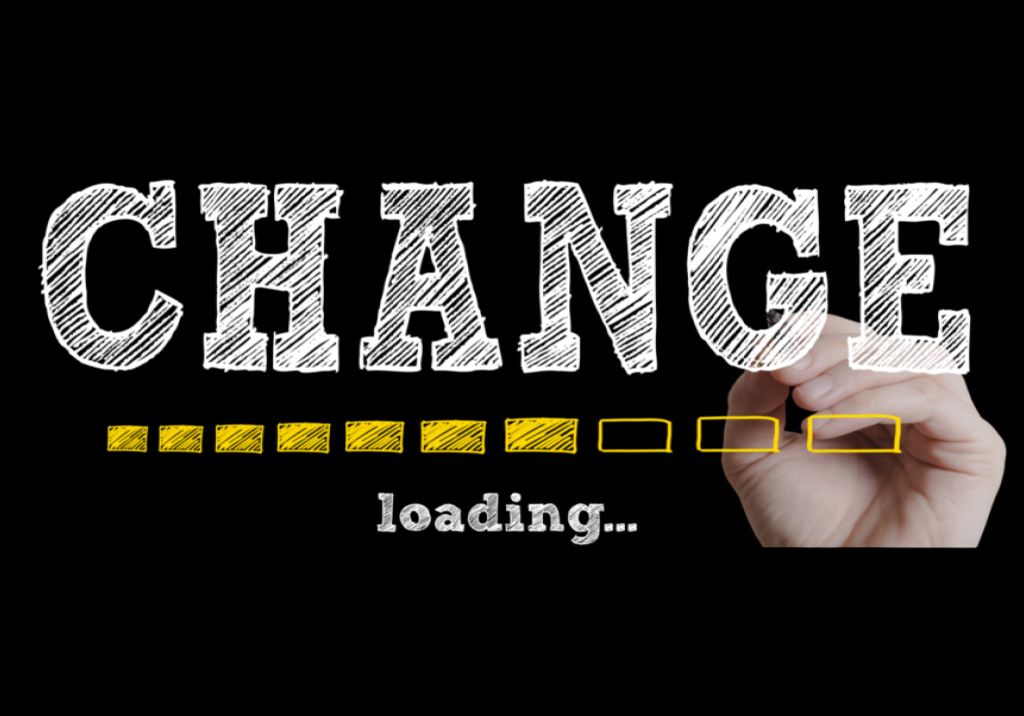"Change is grief."
It’s a wise phrase, isn’t it? It sounds like something a minister might say to a lay person who’s grieving the loss of something important and is reeling from the changes that have resulted.
But wise ministers aren’t the only people who understand the link between change and grief.
Wise business leaders do, too. CEG learned as much last spring during interviews with senior executive leaders and change experts about the many aspects of change management and organizational transformation.
To a one, they acknowledged that recognizing the importance of employees’ emotional experiences during the change process is crucial to its success. And more than a few of them noted that the process itself can ignite grief among employees as they deal with losses that any change can bring.
In fact, that very phrase - “Change is grief” - was mentioned by one of the interviewed CEOs, who heads an American global manufacturer and marketer of consumer and professional products.
“Managing the losses takes compassion and understanding,” she said. “By recognizing and validating grief, we can help employees and stakeholders process the feelings more effectively.”
Which helps everyone get back to the business of change.
In this installment of the CEG executive research series, we’ll explore the presence of grief in change management, and how addressing it is not a “nice option” during change management but an absolute requirement for the kind of workforce buy-in that’s needed to move an organization from where it is - to where it needs to go.
What is grief, anyway?
By now, most of us are familiar with the notion that grief has distinct phases, dubbed “The Five Stages of Grief” by pioneering Swiss psychiatrist Elisabeth Kubler-Ross, who revolutionized the world’s understanding of the emotional impact of loss.
The stages - denial, anger, bargaining, depression, and acceptance - rarely advance in an orderly fashion. We move forward, then fall backward for a bit, or stumble around in the middle, then repeat the process as we eventually (and hopefully) come to accept the loss we’re grieving.
(In this way, the grief process resembles the change process. It’s not linear, but the expectation that it should be can actually thwart its healthy progression.)
We rarely think about grief in relation to our career, says Asma Rehman, a licensed counselor and founder of the Grief Recovery Center in Houston. But we should, given that grief is “the conflicting feelings caused by the end of or change in a familiar pattern of behavior.”
“We spend a huge chunk of our lives at work,” Rehman writes in a post for her center’s blog. “It’s natural to feel complicated feelings at the idea of a change to our work situation because it’s undoubtedly a major change in our daily life. Mixing up such a major aspect of who we are can mess with our sense of identity and self-worth. Our careers and our productivity are often a way we measure our success, and it can feel threatening to have the source of that success change.”
Especially, she adds, if the change might threaten our very livelihood, which can impact our ability to take care of ourselves and our families - “which can create a whole new level of stress - and further grief.”
A new awareness has created a new paradigm
Still, why should leaders be concerned with employees’ change-related grief? Isn’t it a leader’s job simply to tell everyone that things are changing and then to expect employees - grownups that they are - to suck it up and get with the program already?
Maybe it used to be. But not any more, given what we’re learning from breakthrough research in neuroscience, psychology, and leadership, said management and leadership experts Charles Dhanaraj and George Kohlrieser in a recent report for McKinsey
Quarterly called The Hidden Perils of Unresolved Grief.
“In our own work, we frame the discussion [of grief] in terms of basic human needs—the need for identity, purpose, attachment, and control, among other things,” they wrote.
“When people feel the loss of one or more of these deep-seated needs, they are experiencing grief.”
Savvy leaders address this, because they know that employees in the midst of grief cannot bring their whole, authentic selves to their changing workplace unless they’re encouraged to acknowledge - and work through - grief for their losses, too.
Even if some of the losses, to management, might seem like no big deal:
Like the launch of a new CRM system, for example, that rattles an employee who had so thoroughly mastered the old one that he’d become the go-to person for anyone needing help with it. He wonders, who is he now? Is he still valued?
Or the loss of a manager’s daily interaction with trusted colleagues, who have either been transferred to different teams or let go altogether. She was not even consulted about the shift, and she’s worried: who will have her back through the oncoming changes?
Or an associate’s loss of a familiar driving commute, because his work has shifted to a different site to accommodate changes in a manufacturing division. His old route had included a daily stop at a warm and welcoming coffee shop for espresso to go. For years, those brief encounters with friendly regulars anchored his morning routine in a meaningful way. He’s surprised by how deeply he misses them.
Or the loss of identity felt by a company’s entire workforce when the business is merged with a larger one, which quickly replaces the smaller company’s quirky, convivial yet focused culture with its own cautious, buttoned-down, no-nonsense one. Is there a place here for people like us, they wonder?
The large and small losses that change creates need to be addressed as deliberately as a company’s new change strategy.
Because companies thrive when its people feel seen, heard, and known enough to bring all of themselves to the job. Which can directly impact not just a project’s outcome but employee engagement, creativity, contribution, retention, and sense of belonging.
And that strengthens their ability - and willingness - to collaborate, pivot, inspire, motivate, bounce back from adversity, problem-solve, foster innovation and more.
Which, ultimately, strengthens a company’s bottom line.
So leaders who avoid addressing unresolved grief do so at their own peril, say authors Charles Dhanaraj and George Kohlrieser.
“Research suggests it costs companies billions of dollars a year in lost productivity and performance,” they write. “Our own multiyear research effort finds that unresolved grief is a pervasive, overlooked leadership derailer that affects perhaps one-third of senior executives at one time or another.”
Resolving grief starts at the top
For inspiration about how to manage employee grief brought on by changes to the workplace, business leaders and change experts might want to revisit the a human-centered mantra that many companies embraced during the early days of the global pandemic.
Back then, Lorna Friedman, senior partner in the global health business unit at the consultancy Mercer, was interviewed about changes the pandemic wrought.
'People first' is the mantra we think is most important when it comes to leading the workforce,” she told the Society for Human Resources Management.” Of the organizations that provided extra assistance to their employees during that difficult time, she made this prediction: "People will remember the goodwill and reputational value of trying to do the right thing."
Overwhelmingly, the men and women CEG interviewed believed so, too.
In employing emotional resilience and well-being strategies during times of change, they embraced the following key strategies for leaders, employees and other stakeholders.
These helped to identify and acknowledge not just unresolved grief but other feelings that, left unaddressed, can hinder any change program’s success.
1. Transparency and Empathy
Honesty about the difficulty of change is vital, as is acknowledging that change is hard and necessary. Lack of transparency and empathy can cause people to feel alienated by the change process. Fear of negativity should not prevent honesty about the challenges change presents.
2. Emotional Intelligence
Training employees to understand and manage the emotional impact of change is crucial. This includes emotional planning and preparation for second- and third-order consequences.
3. Contingency Planning
This planning should take into account individual and employee data and focus on the big picture and the vision for the end state. Communication should be appropriate and avoid unnecessary details. It's important to recognize bruised egos and to express empathy.
4. Involvement and Support
Engaging employees in the change process is important. This can include recruiting people from the business to help with the change, allowing space for grief and emotions, and encouraging forward movement. Support mechanisms can include shadowing, check-ins, and establishing a buddy system.
5. Relationship Building
Acknowledging that business is fundamentally about relationships is key. People want to feel supported and not abandoned during times of change, and it's important to create a support system that fosters this feeling.
Lastly, said those interviewed by CEG, never underestimate the power of a direct, empathic communication with employees who are hurting from the losses that even eagerly anticipated change can create.
Said one leader, “I think the most powerful change-management tool is having a conversation. ”After all, added another, “Change management is really a people business.”
MORE
INSIGHTS
How to Deal With Ambiguity at Work: 3 Powerful Tips to Thrive When Things Are Unclear
Struggling with unclear goals, shifting priorities, or lack of direction at work? Learn 3 powerful steps to navigate ambiguity in the workplace and lead with confidence.
How to Adapt to Change in the Workplace: 3 Powerful Steps to Thrive in Uncertainty
From corporate restructures and new technologies to shifts in leadership and remote work dynamics, change is happening constantly, and employees must keep up or risk being left behind.
Newsflash: Culture Change is Slow…and Here’s Why
We’ve heard it time after time: Culture change is slow. But why? Why is culture change so slow?? Understanding this is of critical importance in our work in CEG.









